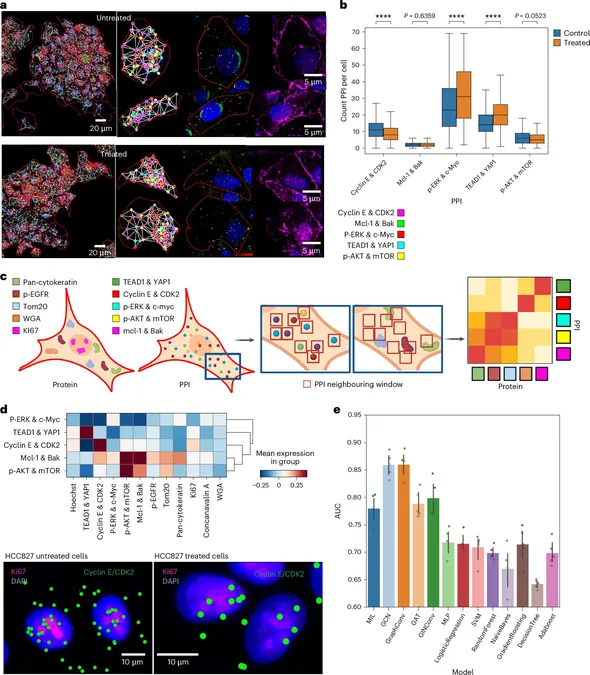
Groundbreaking Discovery Reveals Unprecedented Nuclear Shape Transitions!
2024-11-11
Author: Amelia
Summary of the Discovery
A comprehensive study conducted at CERN by researchers from the Niels Bohr Institute (NBI) at the University of Copenhagen, in collaboration with a theoretical group from Peking University, has unveiled astonishing predictions about the shape transitions of atomic nuclei. This research promises to deepen our understanding of nuclear structure and the fundamental forces within atoms.
Key Findings on Xenon Nuclei
Through meticulously designed experiments at the renowned Large Hadron Collider (LHC), scientists have discerned that the outcomes of intense collisions between atomic nuclei hinge significantly on the initial geometries of the nuclei involved. This insight sheds new light on how the nuclei's shapes, particularly those in their ground state, influence the extreme high-energy interactions that occur during collisions.
The Behavior of Xenon Nuclei
For their investigations, the team focused on the behavior of Xenon nuclei—shaped like an American football. Remarkably, Xenon can exist in various configurations, such as spherical, prolate, or oblate forms, which fluctuate based on the internal forces at play within the nucleus. These nuclear shape transitions are crucial not only for understanding the stability of different elements but also for gaining insights into the strong interactions that govern the behavior of protons and neutrons.
Extreme Experimental Conditions
During an intense experimental session lasting eight hours, Xenon atoms were accelerated to nearly the speed of light and collided with each other, generating temperatures soaring to an astounding 5 trillion degrees Celsius. These extreme conditions lead to the disintegration of the nuclei into their constituent quarks and gluons, creating what is known as quark-gluon plasma—a state believed to have existed just microseconds after the Big Bang.
The Ephemeral Nature of Quark-Gluon Plasma
However, the phenomenon is ephemeral; the quark-gluon plasma persists for less than 10^-24 seconds, significantly outpacing standard measurement techniques. As Professor Jens Jørgen Gaardhøje from NBI explains, researchers must analyze the products of these fleeting collisions to reconstruct the conditions and infer the underlying processes.
Unexpected Findings and Insights
The data analysis conducted by the team revealed a surprising consistency: the spherical Xenon nuclei indeed possess an American football-like shape. You Zhou, the project lead, acknowledged that while this finding aligns with previous knowledge, it’s unexpected, considering the energy levels explored were a million times greater than in past research.
Serendipity in Research
In an intriguing twist, although the primary aim of the experiment was to investigate the quark-gluon plasma, the insights gained about nuclear shapes turned out to be a serendipitous benefit. The LHC’s conditions provided a unique opportunity to simulate the state of the universe shortly after the Big Bang, allowing scientists to study how the quark-gluon plasma behaved—a medium characterized by its low viscosity, referred to as a "perfect liquid."
Innovative Computational Methods
To tackle the complex calculations involved in analyzing the outcomes of Xenon collisions, researchers enhanced their methodologies. Increasing the number of particle correlations from three to six was a pivotal step, though it significantly escalated the computational workload. Remarkably, the team developed an innovative algorithm that streamlines these calculations, allowing them to analyze particle interactions efficiently without reliance on supercomputing.
Future Aspirations
Looking ahead, the researchers aim to secure additional experimental time at the LHC in the summer of 2025, hoping to explore even further into the mysteries of nuclear structure and the universe's fantastical beginnings. The implications of their findings could resonate far beyond particle physics, potentially transforming how we understand the very fabric of matter.









 Brasil (PT)
Brasil (PT)
 Canada (EN)
Canada (EN)
 Chile (ES)
Chile (ES)
 España (ES)
España (ES)
 France (FR)
France (FR)
 Hong Kong (EN)
Hong Kong (EN)
 Italia (IT)
Italia (IT)
 日本 (JA)
日本 (JA)
 Magyarország (HU)
Magyarország (HU)
 Norge (NO)
Norge (NO)
 Polska (PL)
Polska (PL)
 Schweiz (DE)
Schweiz (DE)
 Singapore (EN)
Singapore (EN)
 Sverige (SV)
Sverige (SV)
 Suomi (FI)
Suomi (FI)
 Türkiye (TR)
Türkiye (TR)